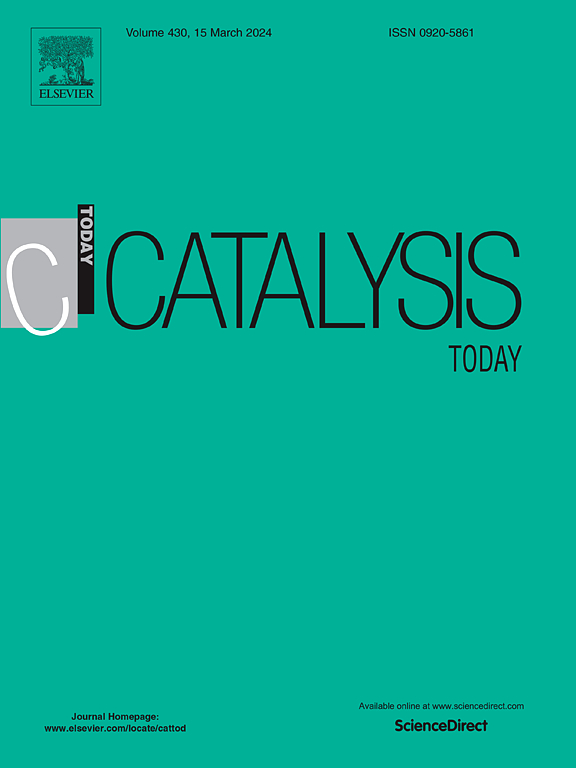微波辅助水热反应合成己酸酯簇的机理
IF 5.3
2区 化学
Q1 CHEMISTRY, APPLIED
引用次数: 0
摘要
作为超碱催化剂的阴离子型己酸盐簇[Nb6O19]8 −通过微波辅助水热合成法在180℃下仅需10 min即可合成出高纯度的[Nb6O19],而传统的水热合成法需要较长的反应时间(>24 h)。本研究采用原位快速扫描x射线吸收精细结构和电喷雾电离飞行时间质谱对微波辅助水热法合成[Nb6O19]8−的机理进行了研究。结果表明,在160℃下,[Nb6O19]快速成核,Nb2O5∙nH2O溶解,同时形成单核Nb。揭示的机理见解提供了微波辅助水热合成多氧氧酸盐簇过程中产品的可控性。本文章由计算机程序翻译,如有差异,请以英文原文为准。
Mechanism of synthesizing hexaniobate cluster by microwave-assisted hydrothermal reaction
Anionic hexaniobate clusters [Nb6O19]8 −, which act as a superbase catalyst, could be synthesized by the microwave-assisted hydrothermal method at 180℃ within 10 min with high purity, whereas the conventional hydrothermal synthesis method requires a long reaction time (>24 h). In this study, the mechanism of synthesizing [Nb6O19]8− by the microwave-assisted hydrothermal method was investigated by in situ quick-scan X-ray absorption fine structure and electrospray ionization time-of-flight mass spectroscopy. This revealed rapid [Nb6O19]8− nucleation along with dissolution of Nb2O5∙nH2O accompanied by the formation of mononuclear Nb species at 160℃. The unveiled mechanistic insights provide the controllability in products during microwave-assisted hydrothermal synthesis of polyoxoniobate clusters.
求助全文
通过发布文献求助,成功后即可免费获取论文全文。
去求助
来源期刊

Catalysis Today
化学-工程:化工
CiteScore
11.50
自引率
3.80%
发文量
573
审稿时长
2.9 months
期刊介绍:
Catalysis Today focuses on the rapid publication of original invited papers devoted to currently important topics in catalysis and related subjects. The journal only publishes special issues (Proposing a Catalysis Today Special Issue), each of which is supervised by Guest Editors who recruit individual papers and oversee the peer review process. Catalysis Today offers researchers in the field of catalysis in-depth overviews of topical issues.
Both fundamental and applied aspects of catalysis are covered. Subjects such as catalysis of immobilized organometallic and biocatalytic systems are welcome. Subjects related to catalysis such as experimental techniques, adsorption, process technology, synthesis, in situ characterization, computational, theoretical modeling, imaging and others are included if there is a clear relationship to catalysis.
 求助内容:
求助内容: 应助结果提醒方式:
应助结果提醒方式:


